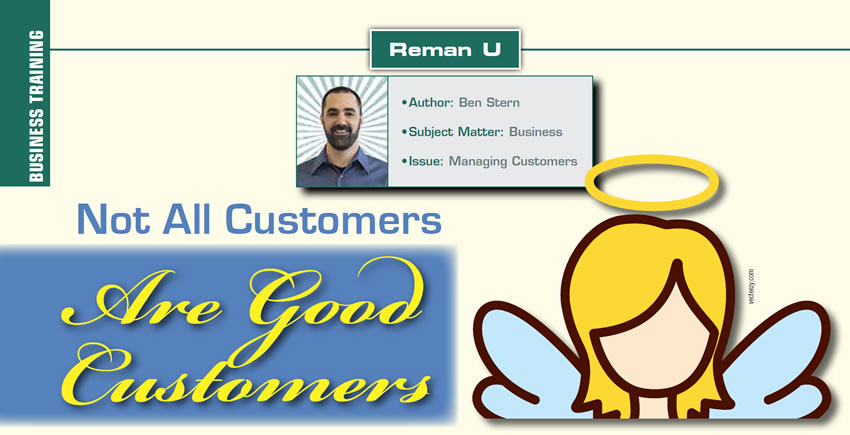
Reman U
- Author: Ben Stern
- Subject Matter: Business
- Issue: Managing Customers
If you are selling paperclips or pizza, this article may not be very relevant, but an increasing majority of U.S. workers sell a service or a product plus the service to support it. When service is a significant part of the customer or company relationship, not all customers are created equally. Not all customers are good customers.
Customers shop, review, vet and evaluate their options as a regular practice and use this information to influence their buying decisions. Should companies make similar decisions about whom they do business with? Aren’t all sales and all customers good for the bottom line? In my experience, spanning two decades, five states and four industries I say absolutely not.
Some questions to help guide your thoughts are:
- Do you know who your good customers or bad customers are?
- What makes a good customer good?
- What makes a bad customer?
- How do you measure a customer?
- What can or should you do with this info? Can or should you fire a customer? What about avoiding bad customers in the first place?

In defining a good (or bad) customer, you need to determine the factors that matter to your company. It is important to consider and evaluate the specific factors that impact your business, and how it should view its customers. Here is a list of some factors that might apply:
- Do they pay in a timely fashion? What are the terms?
- Are they loyal?
- Do they share in both the profitable deals and the ones that turn south?
- Can your business reasonably meet their expectations?
- Does your brand or reputation benefit from their association?
- Is servicing the account efficient or inefficient in relation to their volume?
- Do your customer service and business ethics align?
- Are they a good customer for today? Tomorrow?
- What is your opportunity cost of working with them? Who could you spend your resources on if they weren’t on your books?
Some industries have this down to a science; insurance companies, for instance, have complex algorithms that evaluate customers purchasing potential, loyalty, claim history, credit and other factors to determine how to treat and charge you.
You may be shocked to learn that when buying insurance or paying TV or cell phone coverage, that loyalty is actually penalized. If you are loyal, you are less likely to leave and thus they can raise your prices. The disloyal customer (who switches carriers/agencies/providers) gets the red-carpet pricing treatment because their behavior shows the companies offering these services that they will leave for a better price. These companies understand good and bad customers and have devised pricing and promotional strategies that align with this knowledge.
What’s critical here is that you consider the not all customers are created equal principle and determine the value of each type with respect to your businesses needs and make decisions and form a strategy that supports your business’ health.
You do not need to put energy and resource into a losing proposition. Reserve the right (and actually use it) to politely decline your services. Make choices to your benefit. Don’t keep shoveling the pile because a sale is a sale.
A sale is a sale, but not all of them are a good sale.














